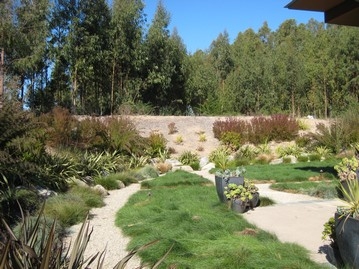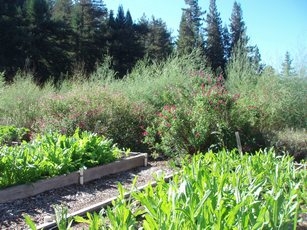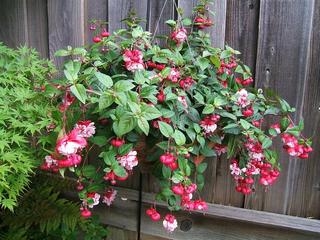Another year has passed in the garden and this is what I've learned.
- Have a plan for how you want to use your garden. This is as important as selecting the right plants for each garden room. Allowing some empty places for new plants, transplants or garden art, makes your garden your own. Add whatever makes you happy and your heart to soar when you're in your garden.
- Pay attention to the size that a plant will attain. This will save lots of headaches later.
- Pruning is free therapy. What better way is there to feel good than to improve the life of a plant?
- Your garden journal chronicles your life as well as what happens in the garden. Making frequent entries, no matter how short, will make you smile when you read it again at the end of the year. Journal your successes and failures, making notes of plants that performed well and ideas to try next year.
- No bucket list is complete without a list of gardens to visit. Whether your destination is as close as Filoli Gardens in Woodside or Butchard Garden in British Columbia, there is no better way to recharge your creative batteries than to see an inspiring garden.
- Enjoy a beverage of some kind often in your garden. That clean up or transplanting will be there tomorrow.
- Weed regularly. The 20 minutes you spend every week or so pulling or hoeing will save hours of back bending work later.
- You, fellow gardeners, are unique. I can't imagine any group of people more diverse and feisty and independent than gardeners. Yet we have such a connection. We love and are fascinated with nature. We find our deepest satisfaction in coaxing plants from the earth, in nurturing their growth. We are enduring pragmatists.
- Edible gardening offers more than just vegetables and fruit trees that feed the body. They are better than a whole medicine cabinet of pills.
- Accept a few holes in a plant: Unless it is being devoured, share a little with other creatures.
- Read and learn more about gardeners who have left their mark on the gardening community. Gertrude Jekyll and Frederick Law Olmstead have timeless ideas. Borrow some of them.
Happy New Year 2012 from The Mountain Gardener


 Held at the University of California Cooperative Extension office in Watsonville and open to the public, the meeting lived up the the Master Gardener slogan to "Cultivate Knowledge... by extending research-based horticultural information". The speaker was Cliff Low, owner of Perry Laboratory in Watsonville. If you have ever wondered why your hedge is languishing despite your exquisite care you may need his services.
Held at the University of California Cooperative Extension office in Watsonville and open to the public, the meeting lived up the the Master Gardener slogan to "Cultivate Knowledge... by extending research-based horticultural information". The speaker was Cliff Low, owner of Perry Laboratory in Watsonville. If you have ever wondered why your hedge is languishing despite your exquisite care you may need his services. Linda Butler starts all her vegetables from seed, and grows year-round. Some are started directly in the beds while others are started in flats and transplanted later. Cole crops, such as broccoli, cauliflower and cabbage, would get eaten by bugs and birds would eat them as fast as they germinated so these are started in flats.
Linda Butler starts all her vegetables from seed, and grows year-round. Some are started directly in the beds while others are started in flats and transplanted later. Cole crops, such as broccoli, cauliflower and cabbage, would get eaten by bugs and birds would eat them as fast as they germinated so these are started in flats.  available in bags or liquid and usually contain humic acid and beneficial soil microbes. Most organic forms of nitrogen must decompose before being absorbed by plants and are therefore slow acting, remaining in the soil longer where they are stored until needed by the plant.
available in bags or liquid and usually contain humic acid and beneficial soil microbes. Most organic forms of nitrogen must decompose before being absorbed by plants and are therefore slow acting, remaining in the soil longer where they are stored until needed by the plant. the plants in the garden come to life. I’ve been invited to tour a garden in Scotts Valley in April when many of the early flowering plants will be in bloom. I’ve been to this garden before and there’s always an interesting tree, shrub or flower to enjoy.
the plants in the garden come to life. I’ve been invited to tour a garden in Scotts Valley in April when many of the early flowering plants will be in bloom. I’ve been to this garden before and there’s always an interesting tree, shrub or flower to enjoy.  They use a lot of nutrients, especially nitrogen, at this time of year. Add water soluble fertilizer to your drip irrigation system or apply it through a hose-end sprayer. Sprinkle dry fertilizers over the soil around the plants or apply in trenches next to the rows. Water deeply afterward.
They use a lot of nutrients, especially nitrogen, at this time of year. Add water soluble fertilizer to your drip irrigation system or apply it through a hose-end sprayer. Sprinkle dry fertilizers over the soil around the plants or apply in trenches next to the rows. Water deeply afterward.